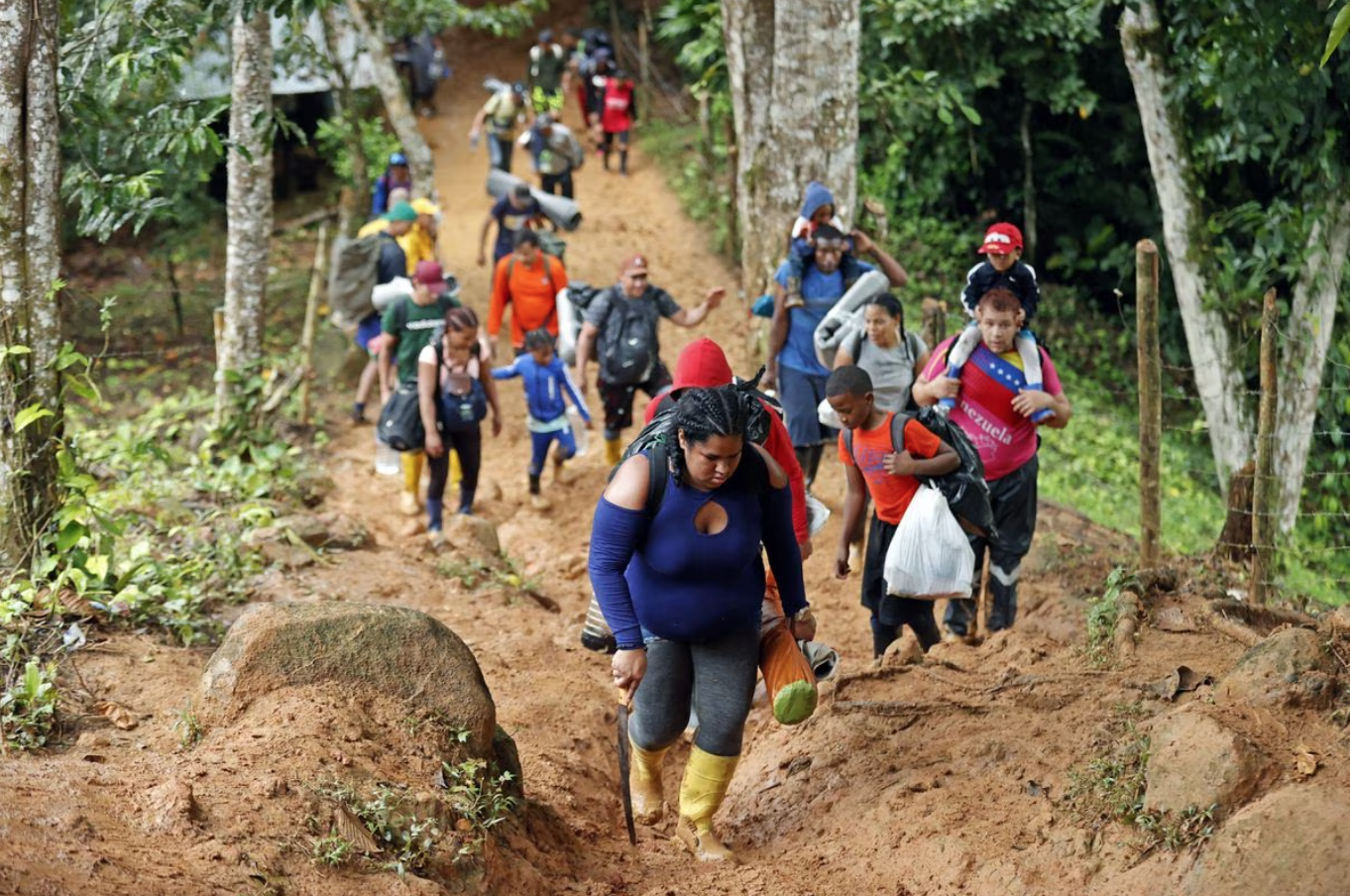The last few years have been unexpected in Ecuador’s contemporary history, given the sum of catastrophic events that radically changed the “migratory landscape”. On April 16, 2016, Ecuador experienced a 7.8 magnitude earthquake that caused 674 deaths and more than 300,000 victims. Many people affected by that telluric movement fled their residences and moved to other cities such as Durán and Guayaquil, and some 57,000 left the country.
In 2017, the decade of the so-called Citizen Revolution’s government came to an end, and the “turn to the right” was taking place after the victory of Lenín Moreno. The neoliberal recomposition, led by former President Moreno and his governmental alliance with the old oligarchic elites, business associations, communication oligopolies, and right-wing parties, led to the deterioration of the living conditions of a significant part of the Ecuadorian population, which caused many to once again see migration as an option to improve their situation.
Indeed, between 2017 and 2019 almost 100,000 people migrated, and by those dates, a total of 1,183,685 Ecuadorian migrants have registered abroad, about 7 out of every 100 Ecuadorians. However, the worst was yet to come.
What at the beginning of 2020 was seen as distant news of something “strange” that came up in a wholesale seafood market in Wuhan province in China, four months later would turn into the worst nightmare: The Covid-19 pandemic. The onset of the pandemic, amidst the weakening of the public health system, was lethal. As part of the adjustment measures, health investment was reduced from $306 million in 2017 to practically one-third in 2019.
The diagnosis of Moreno’s bad government closed with repeated changes of ministers, a network of corruption around the management of the pandemic, and the beginning of “VIP vaccinated”, close to his cabinet. By the end of December 2021, Ecuador registered some 70,000 excess deaths, according to data from the Civil Registry.
The pandemic caused that in 2020 many borders were closed worldwide, leaving numerous migrants, travelers, and tourists stranded, which led to a decrease in the migratory balance, which was negative in that year. However, in the economic sphere, the result of neoliberal adjustment policies, as well as the effects of the pandemic, was a 7.8% decrease in GDP.
As the borders were reopened, thousands of Ecuadorians once again saw emigration as a solution to the crisis. In 2021, the migration balance stood at just over 81,000 Ecuadorians. But not only the flows increased, but also the remittances that became the mainstay of many families to withstand the crisis. If already in 2020 there was an increase, in 2021 remittances soared, beating in both years a record of remittances and surpassing for the first time the barrier of four billion dollars.
By 2022, the “plagues” had not ended in the Andean country. A new problem was added to the picture described above: the increase in violence and deaths, first inside prisons and then in the streets of the country, which led to a rise in the number of murders, hired killings, and femicides. By the end of December 2022, according to data from the National Police, 4,539 violent deaths and 332 femicides were reported. The homicide rate per 100,000 inhabitants rose to 25.5, the highest in the country’s history.
The sum of negative events: the return of neoliberal policies, increased poverty, unemployment, poor management of the pandemic, increased insecurity, and violence caused a new migratory boom. The year 2022 closed with the departure from the country (mainly to the United States) of approximately 108,000 Ecuadorians who did not return.
According to U.S. sources, the number of “meetings” between Ecuadorians and Border Patrol increased considerably, reaching more than 90,000 in 2021, and Ecuador was the country that grew the most (1,971%). This caused Mexico and Guatemala to impose entry visas on Ecuadorians as part of the externalization policies of U.S. control.
However, this measure did not lead to a decrease in the migratory flows, but rather to a search for new routes, one of them through the so-called Darien Gap on the border between Colombia and Panama, known for its danger. If until 2021 there were very few Ecuadorians using this route, the following year there were 29,356 people, being the second group that uses this route the most, only after Venezuelans. Not only is the volume surprising, but also the profile of those migrants who use this route, given that we find people from lower social strata who no longer have the resources or networks to make the trip with the help of moneylenders and coyoteros (human traffickers).
In the last two years, the migratory balance reached 190,000 people. To put the figure in perspective, this is higher than the migration balance of the previous 12 years. The main difference when compared to the previous boom, which began in the late 1990s, is that Ecuadorians migrated more to Europe, by air and without the need for a visa (until 2003). Now many migrate, especially to the U.S. by land, although crossing all of Central America and Mexico.
This shows that neither the imposition of visas nor the “migra” nor the viruses can stop migrants from a country, such as Ecuador, that has a century of absences…
*Translated from Spanish by Janaína Ruviaro da Silva













